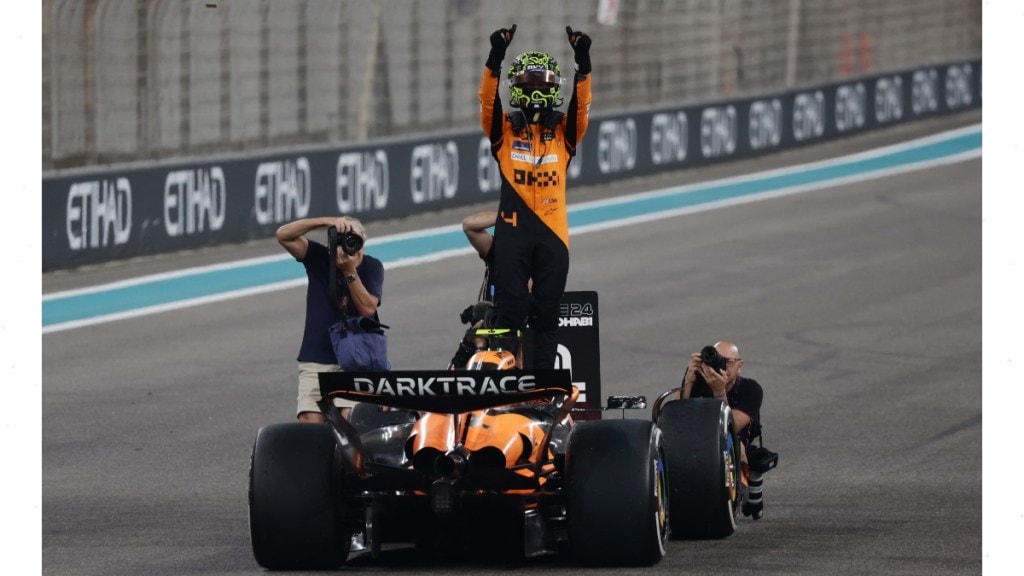There may be no women drivers in Formula One races, but 40% of Formula One fans are now women, with over 750 million fans worldwide. This rise in interest is an opportunity for both the sport and brands at a time when women across the globe will control 75% of discretionary spending in the next five years, as per Nielson data.
The global interest in the sport has risen by 5.7%, approximately 50 million new fans since 2021, says Nielsen Sports data. “Female fans bring fresh perspectives, energy and passion to the sport, inspiring more women to engage with motorsport at every level, from spectators to professionals within the industry. F1 is helping to develop deeper connections with female fans and making motorsport more accessible,” said Nouf Mohamed Al-Bushlaibi, executive director, strategic marketing & communications, department of culture and tourism, Abu Dhabi. Over 35% attendees at the 2024 Abu Dhabi Grand Prix were women, one of the highest female representation rates worldwide that year.
Despite the fan growth, women racers have been few, with none currently. Maria Teresa de Filippis was the first woman to compete in Formula One in 1958; Lella Lombardi was the first woman to score points in Formula One in 1975.
Giovanna Amati is the last woman to have entered an F1 race, having had entries in three races in 1992.
However, events like the F1 Academy, an all-female racing series by Formula One group, started in 2023, are championing the next generation of female drivers. Helmed by former professional racing driver Susie Wolff, managing director of the F1 Academy, who understands the barriers that women face in motorsport, the academy is determined to help the next generation of female talent. Several women have participated in the F1 Academy races during the 2024 Abu Dhabi Grand Prix, which is a testament to rise in interest. The 2025 season will open in Melbourne on March 14, followed by China on March 21, which joins the calendar for the first time, besides expansion of the grid to 18 cars.
The rise in interest is an opportunity for brands to become a driving force with sponsorships, product placement, branded vehicles, and driver-specific campaigns among its growing female fan base. The average team sponsorship deal rose 56% from pre-pandemic levels, from $2.87 million in 2019 to $5.08 million now with an average duration of 3.2 years compared to a previous 5.2 for the same rate of growth.
French luxury giant LVMH (Moët Hennessy Louis Vuitton) which owns beauty brands like Benefit Cosmetics, Fresh, and Fenty Beauty and Sephora, has struck a 10-year sponsorship deal with Formula 1, covering its Louis Vuitton, Moet Hennessy and TAG Heuer brands, replacing Rolex as Formula 1’s global partner. The 10-year tie-up is estimated to be worth more than $1 billion with annual sponsorship fees topping $100 million. LVMH’s iconic brands are estimated to be involved in the sport to reap the monetary benefits of this partnership.
“In recent years, Formula 1 has truly become one of the most desirable sports in the world. It’s a vibrant discipline that echoes a number of values that are very important to us, such as innovation, team spirit, and performance,” Frédéric Arnault, CEO of LVMH Watches, said in a company statement.
English beauty brand Charlotte Tilbury last year announced its first-ever global sports sponsorship to sponsor F1 Academy with a Charlotte Tilbury branded racing car, suit, and helmet as part of the brand collaboration. The idea was to elevate the new generation of young female drivers, and open up the traditionally male-dominated world of motorsport to even more talented young women.
“Motorsport has a huge female following, and the drivers of F1 Academy are increasing representation and diversity in the sport. This partnership celebrates the strength, determination, and the undeniable power of female excellence,” said Charlotte Tilbury, president, chairman, CCO, and founder of Charlotte Tilbury.
Anastasia Beverly Hills announced to sponsor F4 and F1 Academy driver Bianca Bustamante, their first athlete ambassador in 2023, who in an interview stated, “I’ve gotten criticism for wearing makeup while I race, but that’s one thing I’ve always loved – the fact that I can combine creativity, beauty, and motorsport and be feminine in a male-dominated sport.”
Other premium brand associated with female racers include Tommy Hilfiger, Puma, American Express and Tag Heuer.
The transformation in the male-dominated sport is fuelled by social media engagement and the rise of OTT platforms. “Netflix’s Drive to Survive docuseries tracking F1 teams topped the streaming company’s viewing rankings in 33 countries when it was released at the beginning of the 2022 season. The rise of OTT platforms and globalisation has expanded its reach, providing fashion and beauty brands with access to a diverse and highly engaged global audience,” said Monica Singh, associate professor, department of fashion & textile, Pearl Academy.


